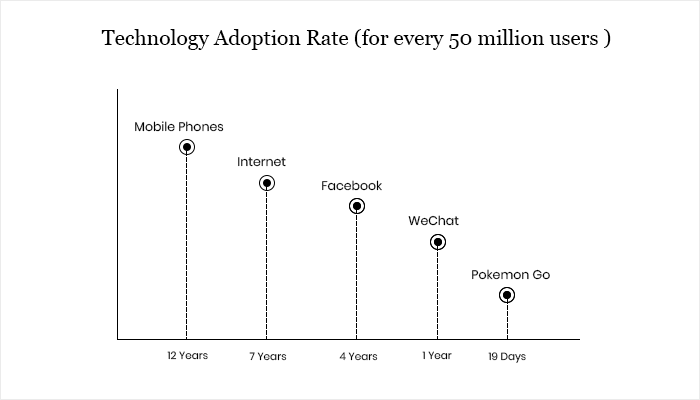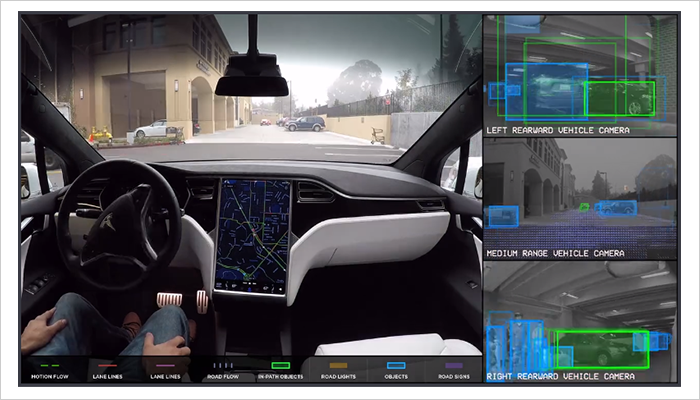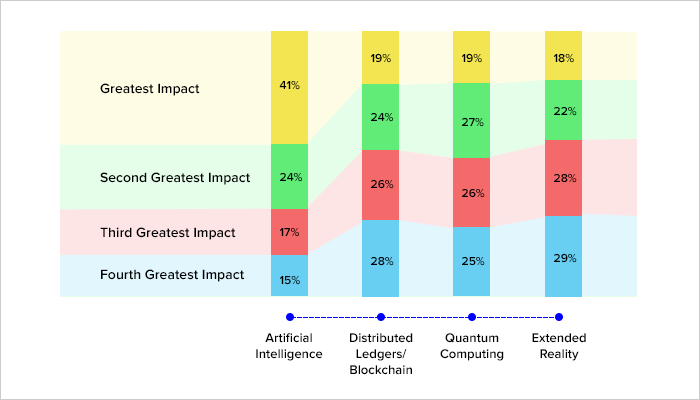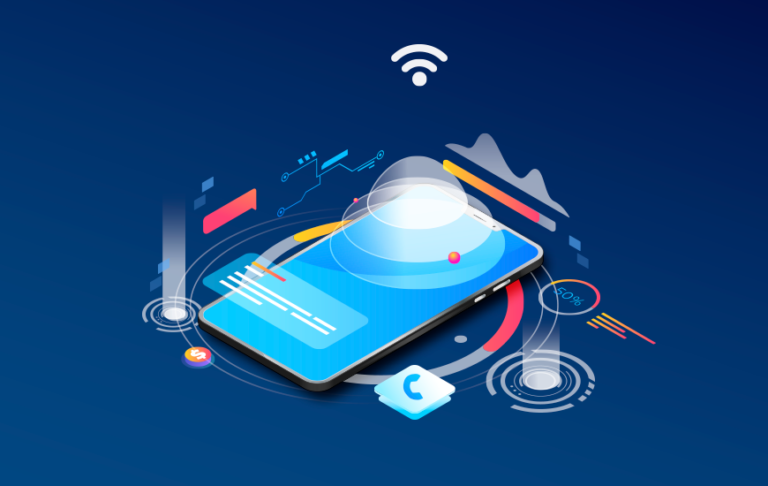

Let us start with 3 (recurring) questions-
Q1) Are you aligned with a frantic adoption rate of new digital technologies?
Q2) Does your business have a strong foundation for SMAC (Social, Mobile, Analytics, and Cloud) to incorporate the latest tech trends that’ll drive the post-digital wave?
Q3) Do you have a digitally mature workforce to offer customized products and services that adapt to the constantly changing realities?
These are the 3 critical questions you need to ask yourself as an entrepreneur before assimilating the upcoming technologies of 2020.
According to the IDC Worldwide Semiannual Digital Transformation Spending Guide, the global annual spending on technologies and services is about to hit a whopping $2.3 trillion as forecasted. The spending on digital transformation (DX) is at an estimated compound annual growth rate of 17.1% for a period of five years (2019-23). In the post-digital world, along with digital realities, related products and services will be hyper-personalized. And to decipher that, we will require a technology vision that meets the requirements of constantly changing on-demand experiences.

In a digital ecosystem that’s transitioning from SMAC to the distributed ledger and quantum computing, where does your business stand? To understand this question, we have come up with the latest technology trends that you can incorporate into your business.
To understand such questions, we have come up with the latest technology trends that you can incorporate into your business.
Latest Technology Trends for 2020
If you’re still wondering about the next technological innovation, take a look at some of the newest tech trends that have been hand-picked by our experts.
1.5G Technology- A Boon For Businesses in 2020
The term ‘5G’ has been creating a buzz for almost half a decade now and since it has rolled out, it definitely, like its predecessors, has created a revolution of a kind. The advent of 5G is one of the most enigmatic new upcoming technologies that could impact businesses in 2020. Many industry experts have termed 5G as the future of communication and to a great extent, it is true.
“5G wireless networks will support 1,000-fold gains in capacity, connections for at least 100 billion devices and a 10 GB/s individual user experience of extremely low latency and response times, as stated by Huawei. “Deployment of these networks will emerge between 2020 and 2030.”
The most striking feat of 5G will be its speed which is expected to clock at 20 GB/s. Now, how fast are we discussing? Let us take an example. Suppose you download the contents of an (approx) 5 GB DVD at an average of 50 MB/s. It will take roughly about 13 minutes. Now the same will take barely 2 seconds to download on 5G at top speed.
The heterogeneous network distribution. Source: Qorvo
Some noteworthy goals of the 5G technology include
- Amplified broadband for mobile communication
- Object-specific transformation with increased connectivity
- Unlimited scope for IoT enhancement
- Increased flexibility and support
However, to take this speed to everyday mobile users, mobile network carriers will need to increase bandwidth and reduce network costs. Moreover, LTE adoption isn’t waning and is estimated to reach $672 billion by the end of 2020.
The onset of 5G opens up a massive playground where subsequent technologies will find their vantages. Trends like self-driven cars, VR/MR/MR, empowered smart cities, etc. strengthen the foundation for ‘what’s next in technology’.
2. Autonomous Driving- An Easy, Safe Driverless Drive
You must be apprised of companies like Tesla, Alphabet, and Waymo, and the one thing that is common among them is their objective, which is to craft impeccable autonomous vehicles. The idea of a driverless car in itself generates a considerable amount of excitement.
Tesla and SpaceX founder and chief Elon Musk already has the future design of autonomous vehicles and aims to go big in this industry. During an interview Elon has stated, “From our standpoint, if you fast forward a year, maybe a year and three months, but next year for sure, we’ll have over a million Robo-taxis on the road.”
Functions like automated braking, lane-changing, and automation of other in-car systems are on their way to being streamlined with the guidance of data capture and analytics.

However, Gartner analyst Mike Ramsey thinks differently, which undoubtedly has a point,
“The idea that you can have a vehicle that can make complex decisions for full self-driving is just not plausible at this point.”
There is still time for the modulation of the laws for autonomous driving by legislators, regulators, and authorities. Over that, significant tweaks will be required in the existing infrastructure, laws, and social attitudes before we can embrace autonomous vehicles in the current technology trends in information technology. But none of these determinants could rule out the possibility of autonomous vehicles in 2020.
3. Edge computing- Bridging the Gap Between Data Storage and Computation
Today, the primary concern of every industry is the laggy approach that sometimes affects the overall management of the operations. Therefore, industries are focusing more on the efficiency and the response rate of computing, through which data analysis is made. And here comes the role of edge computing.
Edge computing brings data storage and computation closer to the businesses, and hence, ameliorates the response times and saves bandwidth. Also, it weighs more like the latest trend in technology because the industries are rapidly empowered with sophisticated and specialized resources, which is bound to reduce the latency.
The primary advantages of Edge computing include
- Edge computing enhances the security to a new level by countering the issues of local compliance, privacy regulations, and data sovereignty. Although many believe that edge computing, in fact, expands the vulnerable surface for attacks, it clearly nullifies the impact of an organization.
- Speed gets massively enhanced with the help of edge computing as it reduces the amount of latency. For example, autonomous vehicles require faster processing of data since every millisecond matters on the roads matters. By confining data analysis to the edge, the speed of processing the data can be massively improved.
- Edge computing reduces the cost of retaining the data significantly by categorizing each data from the management perspective. As data can be retained in edge locations, it significantly reduces the bandwidth cost and all but eliminates the redundant storage.
- As of now, edge computing is being fueled by the rapid evolution of the Internet of Things (IoT) and in the future, it will create an unstructured architecture over a set of distributed cloud services. For instance, we have drones that directly communicate with the enterprise IoT platform and conduct peer-to-peer exchanges. One such example is the latest package delivery drone by Amazon.
In the below video, you can see a cohesive demonstration of the massive Amazon Zeppelin which acts as a mothership to all the delivery drones. The drones have swanky posh features that any geek will embosom right away. Things like Hybrid design, fully powered AI, a variety of sensors to detect static and dynamic objects, peerless air stability and stamina, safeguarded rotors and environment-friendly features exude the transcendental growth among delivery drones.
4. Democratization- A Democracy in Technology
The term democratization is derived from the word democracy. Like in a democracy, everyone has equal rights and responsibility, similarly, the democratization of technology refers to the easy access of technical domain to everyone, irrespective of their profession and place.
Gartner asserts four key aspects of the democratization of technology trends that will make it bigger in 2020:
- Application development
- Design
- Knowledge
- Data and analytics
The best example of democratization can be credited to the developers, who will be able to generate data models without learning the skills of a data scientist.
However, there is still a concern about the future use of the latest technology trends in information technology as this because it will also enable people to exploit easy-to-use tools, which may pose harm to society.
5. Human Augmentation- Enhancing Cognitive Abilities
Human augmentation can be defined as a process by which a person’s physical and cognitive ability is strengthened. Once implanted in a human being, it will enable the person to execute tasks that were earlier impossible for him.
For instance, we have miners who use wearables to enhance their safety. Then the cases of human augmentation in soldiers are a highly anticipated topic and are in pursuit behind the curtains by the armed forces of many countries, as per reports.
The augmentation of humans will not only enhance the physical endurance of a person but it will also enhance the human’s ability to think and decide better. To put it simply, we can say that human augmentation does hold substantial potential in the future of technology.
6. Distributed Cloud- Connecting Operations to Cloud Services
The trends in cloud storage and cloud computing are already embraced by industries across the globe and the next big thing that is going to hit the tech ecosystem is the distributed cloud system. Distributed Cloud helps in connecting the public cloud distributed operation of cloud services to specific locations.
It’s expected that by 2020, 75% of the enterprise-generated data will be processed regardless of the centralized data center. This new upcoming technology of 2020 will be a significant breakthrough in cloud infrastructure.
Distributed Cloud is still in its infancy and there is a long way to go. Many companies are up with their service subsets to be used in a distributed way.
7. DARQ- An Asset for Hiring and Training
Shaping as one of the recent trends in technology this year, Distributed ledger technology (such as blockchain), Artificial intelligence (AI), Extended reality (including virtual and augmented reality), and Quantum computing, abbreviated to DARQ form one such future technology trend of 2020 that business must integrate on priority. So, when you approach hiring, training, and employee retention in 2020, keep DARQ in mind.
Volkswagen, for instance, is already cashing in on one of the biggest new technology trends of 2020. It uses quantum computing to test traffic flow optimization and accelerate battery development.

The company is also testing distributed ledgers to provide automatic payments at gas stations, create tamper-proof odometers, protect cars from hackers and more. Similarly, it’s using AR instructions to help service employees repair vehicles.
Taking all these use cases of DARQ into consideration, we can say that its existence in 2020 is beyond shadow of doubt.
8. Personal Profiling- Enhancing Adaptation to Latest Technologies
Digital integration into people’s lives has become so deep that data analytics has more information than they could ever analyze with current technology. As consumer analytics becomes a crude priority of every business, the latest tech trend is profiling consumers by examining how they interact with the technology in hand.
To analyze the gateways to profiling user spending patterns, we need to answer questions like:
- What social media apps do they most visit?
- How do they curate their social profiles?
- What pictures do they post?
- What all places they check into on social media?
The trick here for businesses is to integrate and adapt to an individual’s preference for the latest technology. Gillette is one such example that has partnered with 3D printing startup Formlabs to offer customized razor designs.
Despite having a promising future, a top technology trend like this raises one glaring question – where is consumer consent in this personal profiling and where do we draw the socially acceptable line and how will this line differ from consumer to consumer?
Well, for that, we have to wait and observe the manner in which personal profiling will be deployed by businesses in 2020.
9. AI Products- For the Ease of Life
Artificial technology or AI is not a new term in the IT-sphere, but now there are further verticals of AI that are shaping the industries globally and this is eventually making the technology features in the top IT trends today.
AI technology trends, including products like AlterEgo, a mind-reading wearable, and citizen robots like Sophia, are promos on how big AI technology will get in 2020. Companies like Domino’s and Doordash are already experimenting with drones and robot delivery.

Although at present, these latest emerging technologies are still riddled with glitches threatening human safety, looking at their enormous prospects, AI supplements are bound to become a technology trend in 2020.
10. Data-Driven Policing- Countering Data Breaches and Cyber-Attacks
Ever since the European Union’s General Data Protection Regulation (GDPR) tightened the bolts on privacy and data protection laws, businesses and consumers alike have become more aware of their vulnerability to data breaches and cyber-attacks.
According to Gartner, by 2020, nearly 70% of organizations will be exposed to personal data archiving. That’s a 60% growth since 2018 when the number was at 10%.
In fact, emerging and upcoming technology trends like cryptocurrency will be one of those upcoming technologies that are yet to be compliant with privacy laws. An insertion of personal data into public blockchains can be a major worry for 75% of public blockchains by 2020. As a result, an entire ecosystem, based on data-driven technologies, that is constantly growing in its interconnections is a key tech trend that businesses can benefit from by forging early-on partnerships.
11. Momentary Markets- For the Transformation of Customer Analytics and Advertising
Real-time opportunities to capture “momentary markets” will change the face of customer analytics and advertising in ways hard to imagine. As digital realities get more sophisticated and narrowed down to an exclusive reality of each moment, global technology trends will align towards more customized and on-demand experiences to fulfill customer needs.
To do this, businesses will need to combine real-time analytics capabilities with sophisticated back-end systems to capture constantly altering customer needs. Pairing this with constantly updating digital demographics will open new alleys for businesses to discover unmet customer needs.
12. Automation- For Advancements in Analytics
One of the most emerging trends in information technology, Automation is aimed to augment people and propel business operations. It combines packaged software, machine learning, and automation tools to deliver the results. In the next couple of years, automation of data science will empower scientists to churn out advanced analysis.
For example, businesses in retail will need it to compete with cashier-less AMAZON GO stores. Automation has already had us welcome cashier-less AMAZON Go stores across the US, but according to CNBC, the number will be 3,000 of its cashier-less AMAZON GO stores by 2021.

According to a PWC report, automation will go through three waves of automation:
- Algorithmic displacing around 3% to 30% of jobs from the early 2020s to mid-2020s.
- Augmentation increasing these percentages higher as technology improves itself.
- Autonomy wave that is predicted to surface in the mid-2030s.
13. Reskilling- Upscaling Human’s Digital Sophistication
The speed at which machines are learning and upscaling, human workers’ digital sophistication will be a must-have in the latest technology trends in 2020. The present human workforce is dealing with a disruptive digital transformation where cloud, analytics and digital wave may still stand essential for groundwork but are no longer the crown jewels of “disruptive technologies.” Yet the human workforce is still recruited, trained, and assessed in pre-digital ways.
To integrate new technology in 2020, businesses need to train their workforce in a post-digital manner. For instance, the next-gen workforce needs to be trained in Augmented Reality, Virtual Reality, Internet of Things, Blockchain, and Artificial Intelligence, among other future trends in technology that are bound to make an appearance in the technology vision of 2020.
14. Medical Upgrade- The Rise of 3D Printing
A much-anticipated tech trend in 2020 will be the sophistication of technology upgrades in the medical field. 3D printing will open a new business of advanced prosthetics as many universities are expanding their research in 3D printing of bionic body parts.
Scientists at Princeton University, New Jersey, for instance, have 3D printed a “bionic ear” that can “hear” radio frequencies far beyond the range of normal human capability.

Similarly, telemedicine and virtual diagnosis powered by AI and AR will need businesses to rework their business model in medicine.
15. Digital Debit- Growth in Adoption of Digital Transactions
Facebook’s cryptocurrency project Libra is expected to be completely fleshed out and in sync with government regulations by 2020. As cryptocurrency gains stronger credibility and digital payment systems like Google Pay and Amazon Pay grow in use, traditional banking will lose its ground.
In 2020, traditional banks will hold greater value, but businesses will need to carve out more adoption space for growing digital transaction sources. It’s no coincidence that banks like Bank of America are gathering blockchain patents.
Key Takeaways of 2020 Tech Trends
- Businesses will need to adapt to a transition from social, mobile, analytics and cloud (SMAC) to Distributed ledger technology (such as blockchain), Artificial intelligence (AI), Extended reality (including virtual and augmented reality), and Quantum computing (DARQ)
- Personal profiling of consumers by analyzing their social profiles, where they check-in and what products do they tag among other parameters will change marketing for businesses.
- Businesses will require the reskilling of the Next-gen workforce to be trained in 2020 tech trends such as Augmented Reality, Virtual Reality, Internet Of Things, Blockchain, Artificial Intelligence.
- Ever since the European Union’s General Data Protection Regulation (GDPR) laid the foundation for data privacy regulations, businesses will need to adapt their analytics to similar guidelines in 2020 to protect user information.
- Real-time opportunity to capture “momentary markets” will require businesses to update customer analytics and advertising.
- AI products like AlterEgo, Sophia (robot) and driverless vehicles from companies like Tesla, Uber, and Volvo will get more sophisticated in 2020.
- 3D printing will open doors to bionic body parts processing, while telemedicine combined with AR diagnosis will upgrade businesses in medicine.
- Automation in businesses will ride in three waves: Algorithmic, Augmentation, and Autonomy implying that automated stores like cashier-less AMAZON GO stores will surface, increase and lose all human workforce in stages across 2020.
- Traditional banking will get a little weaker with Facebook’s cryptocurrency project Libra and the growth of digital payment systems like Amazon pay.
- 5G will support 1,000-fold gains in capacity, connections for at least 100 billion devices and a 10 Gb/s. While this means faster browsing for businesses, the unimpeded growth of LTE still questions 5G.
What’s Next in Technology?
Technology trends in 2020 will come with both unfathomable innovation and intricate connectivity, drawing the social responsibility of businesses to respect the ethical lines of the consumer data breach. According to the PwC report, AI Products by 2030 will contribute over $15.7 trillion to the global economy.
Analytics will see dramatic changes for businesses in terms of product modification. A machine learning app developed by Sam’s Club is already using machine learning to analyze customers’ past purchases and auto-fill their shopping lists. It also plans to add a navigation feature, which will show optimized routes through the store to each item on that list.
While this suggests more sophisticated consumer satisfaction and better business, it also begs the question of what is the real cost of consumer analytics in 2020 collected for these services.
In 2020, businesses not only need to come together to form a cyber-secure ecosystem but also review their take on data analytics. For that to happen, the present staff needs to be well trained for the latest trends in information technology and the process should be followed accordingly. We expect to catch sight of a technological advanced world with conclusive use cases of all the above mentioned technologies.
- What is the Latest Technology?
There are the various set of technologies that are making up in the IT sector, and among them, a few are listed below:
- Robotic Process Automation or RPA
- Edge Computing
- Robot Dexterity
- Predicting Preemies and more.
- What is Technological Trend?
Technology is an ever-evolving root term, and whatever technology is in use right now, can be covered under the current technology trend. And for the technologies that are anticipated to catch up in the future can be credited as the upcoming technology trend.
- How Technology Helps Us in Our Daily Lives?
With changing times, technology has set foot in almost every aspect of our lives. Right from calling to control home lights, everything is on our fingertips. As we proceed in the future, technology is expected to make more way into our living.
- Who is Developing 5G Technology?
Various tech giants have dived into the race of 5G technologies. Among all, here are the top guns of the 5G race:
- Nokia
- Qualcomm
- Ericsson
- Samsung
- Intel
 Follow
Follow 
Source


